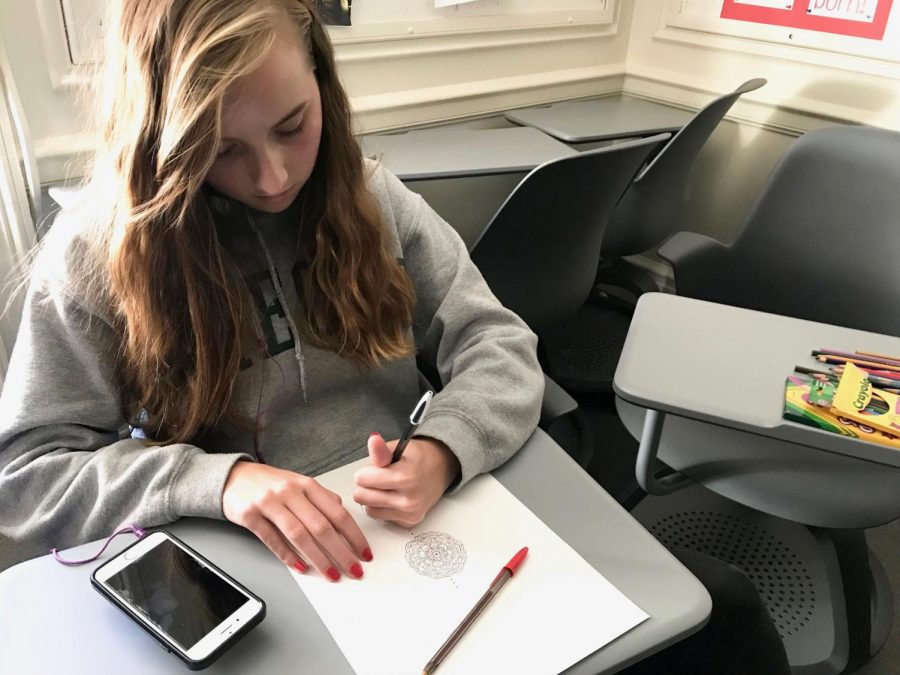Theology classes meditate with mandalas
Sophomore Elsa Hagstrom draws a mandala during her World Religions class. Students learned about Buddhism and the use of art meditation prior to the mandala drawing class.
November 6, 2017
WEB EXCLUSIVE Sophomore students drew mandalas inspired by Tibetan Buddhism as part of their World Religions theology class’ unit on Buddhism.
“Mandalas are a key part of the spiritual technology of Tibetan Buddhism,” theology teacher Kate McMichael said. “Mandalas express the center of the universe and a cosmic consciousness at the core of all things. They also represent the radical impermanence of things and are used as a form of mediation.”
Although mandalas are traditionally made with sand in the Tibetan Buddhist tradition, students used pen and paper to create their drawings, according to sophomore Annabelle Applegarth. Students were also instructed to draw whatever came to mind instead of creating a ‘perfect’ piece of art.
“When I first started drawing my mandala I realized I was thinking about it too much,” sophomore Lauren Barrabee said. “So then I flipped the paper over and just went for it, drawing whatever came to mind, and that was the one that turned out way better since I just let myself relax and draw.”
In Tibetan Buddhism, mandala designs are wiped away immediately after they are created. Applegarth ripped up her mandala at the end of class in order to symbolize the message of impermanence and fully experience the ancient tradition.
“It’s all about the process rather than the product,” McMichael said. “It is important for students to take a deep breath, be in the moment and remember that the product does not have to be perfect.”
At the end of the class, students were shown images of mandalas in real life and the shapes in nature that the designs originate from so that they could continue to make mandalas outside of the classroom.
“Studying the great wisdom traditions of the world is finding those bits of wisdom that we can implement into our own lives today,” McMichael said. “Mandalas remind us to embody a sense of calm and that things can turn out better when we simply let go.”













